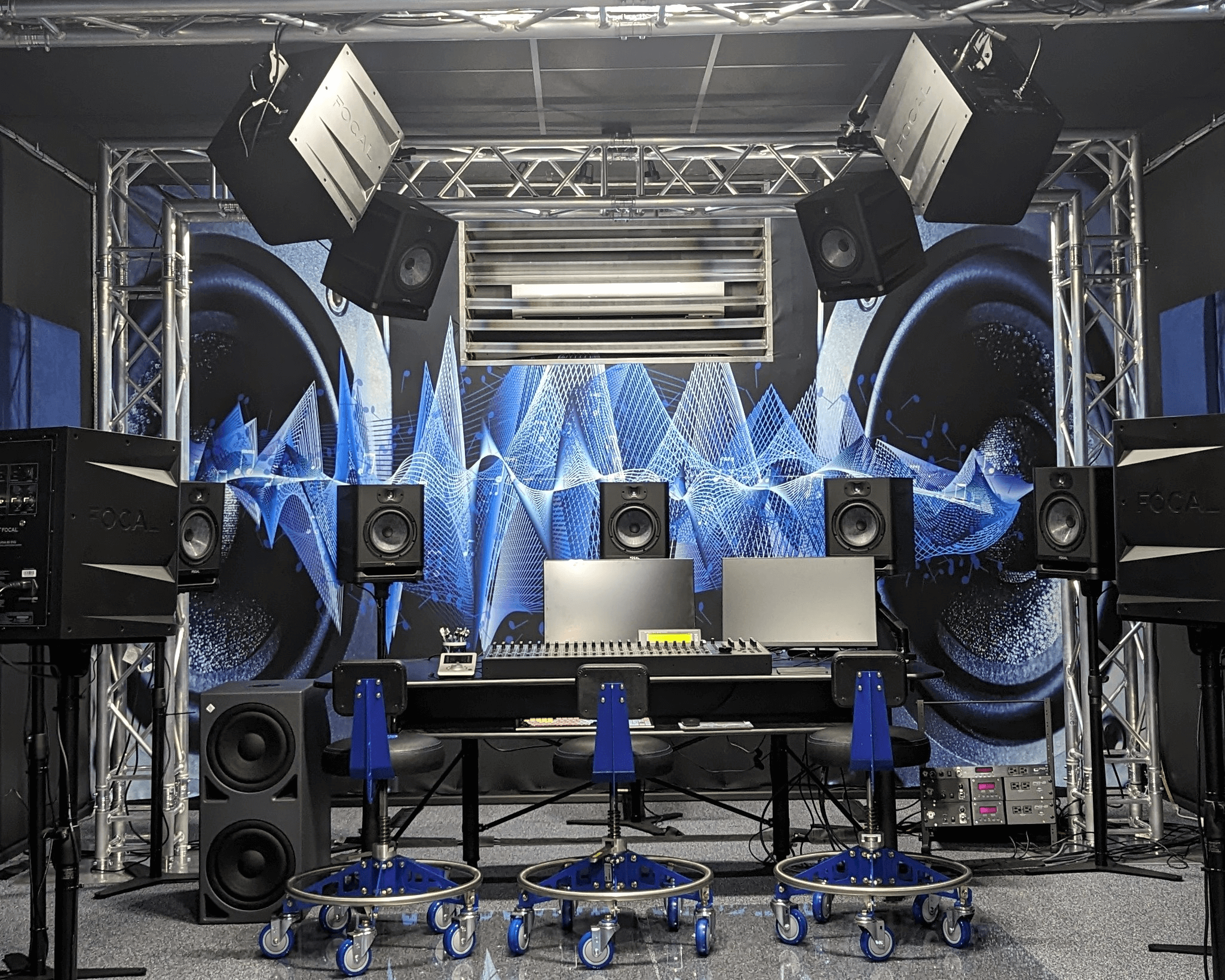Top 9 Audio Mixing Techniques Professionals Used in 2023
Audio mixing is an art form that blends creativity with technical skill. In 2023, professionals use a variety of techniques to create crystal clear, dynamic, and immersive audio experiences. Whether you're an aspiring audio engineer or a seasoned pro looking to update your skill set, understanding these top audio mixing techniques is essential. Let's dive into the methods that are shaping the sound of today's music and multimedia projects.
1. Balancing Levels for Clarity
When embarking on the journey of audio mixing, the first port of call is often mastering the art of balancing levels for clarity. This technique ensures that each component of your track can be heard distinctly, without any one element overpowering the others. It's about finding the right volume for each instrument or voice, to allow them to coexist harmoniously within the mix. This balancing act is a foundational skill for audio engineers, requiring a keen ear and a lot of practice. Understanding how to navigate this process can truly make or break a mix, setting the stage for a polished, professional sound.
Imagine you're painting a landscape; your mix is similar, where each sound represents a different color. Just as too much of one color can overwhelm a painting, the same can happen in a mix with any dominating sound. Successful level balancing is akin to creating a balanced composition in art, where every element has its place, contributing to the overall picture without dominating it. By using tools like volume faders and meters effectively, professionals can achieve a mix where every sound is perfectly placed, ensuring the listener's attention is drawn exactly where it needs to be.
2. Utilizing EQ to Shape Your Sound
Equalization, or EQ, is another essential technique in the arsenal of a skilled audio mixer. This process involves adjusting the balance between frequency components within an electronic signal. In simpler terms, it can boost the brightness, add warmth, or even remove unwanted noise from your tracks. Think of EQ as a sculptor's tool, where sound frequencies are the clay. Professionals use EQ to carve out space in the mix for each element, ensuring they don't step on each other's toes, thereby avoiding a muddy sound. It’s about enhancing or diminishing certain frequencies to make each track sit perfectly within the mix.
3. Dynamic Range Compression
Dynamic range compression is a pivotal technique in audio mixing. It involves reducing the volume of loud sounds or amplifying quiet sounds, thus narrowing the dynamic range of an audio signal. The purpose? To ensure that all elements of a mix are evenly heard, reducing the disparity between the loudest and softest parts. This doesn’t mean making everything the same volume, but rather gently taming the dynamics to make the audio more pleasing and manageable. Professionals use compression to add punch, warmth, and power to their mixes, enabling tracks to sit better with each other within the overall mix.
4. Spatial Panning for Immersive Soundscapes
Spatial panning is all about placing the elements of your mix in a three-dimensional space. By adjusting the pan of each track, audio engineers can create a sense of width and depth, making the mix more immersive. This technique can simulate the physical distribution of sound in real life, giving the listener the sensation of being surrounded by music. Whether it's placing a lead vocal directly in the center for emphasis or spreading background vocals wide to fill out the sonic landscape, panning is a powerful tool for bringing your mix to life.
5. Reverb and Delay for Depth
Reverb and delay are two effects that can add incredible depth and space to a mix. Reverb simulates the sound of audio bouncing off surfaces and returning to the listener, which can be used to create anything from an intimate vocal ambiance to the vastness of a concert hall. Delay, on the other hand, repeats the audio at a set interval, adding texture and rhythm. By combining these effects, professionals can enhance the emotional impact of a mix, making it resonate more deeply with listeners.
6. Creative Use of Automation
Automation in audio mixing is a bit like having an assistant who moves the knobs and faders for you based on predetermined instructions. It allows for dynamic changes in the mix over time, such as fading in a track, adjusting EQ settings for a verse, or subtly changing the level of reverb on a vocal during the chorus. Automation adds motion and emotion to a mix, providing variety and interest. It's a tool that, when used creatively, can significantly enhance the listener's experience, making each moment of the track intentional and impactful.
7. Mastering Side-Chain Techniques
Side-chain compression is a technique often used to create a rhythmic pumping effect in electronic music, but its uses go far beyond that. It can be employed to ensure that two elements in a mix don't compete for the same sonic space. For example, by side-chaining the bass to the kick drum, the bass can be momentarily reduced in volume every time the kick hits, making the kick stand out more. This technique is all about creating space and rhythm in your mix, making it essential for crafting a sound that's both dynamic and coherent.
8. The Art of Layering
Layering is a powerful technique used to add richness and complexity to a mix. This involves stacking different sounds together so that they blend seamlessly, creating a fuller and more interesting sonic palette. However, the art lies in choosing the right sounds to layer; they must compliment rather than compete with each other. Whether it's layering multiple drum samples to achieve the perfect snare sound or combining synth lines for a lush texture, successful layering can elevate a mix from good to breathtaking.
9. Mixing in Mono for Consistency
One technique that might seem counterintuitive but is incredibly effective is mixing in mono. In a world that's accustomed to stereo sound, mixing in mono ensures that your mix will sound good on any playback system, from a mono kitchen radio to a full stereo sound system. It forces you to make decisions based on frequency and level rather than spatial effects, which can lead to a more cohesive and balanced mix. Once the mix sounds great in mono, switching to stereo often only enhances the spatial qualities, making for a more robust mix overall.

